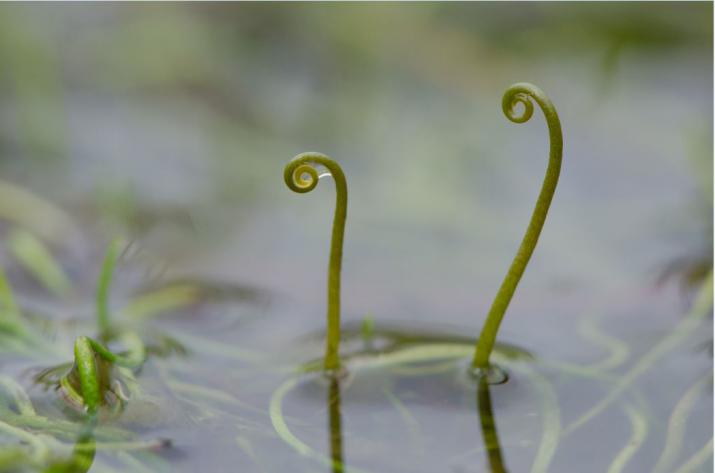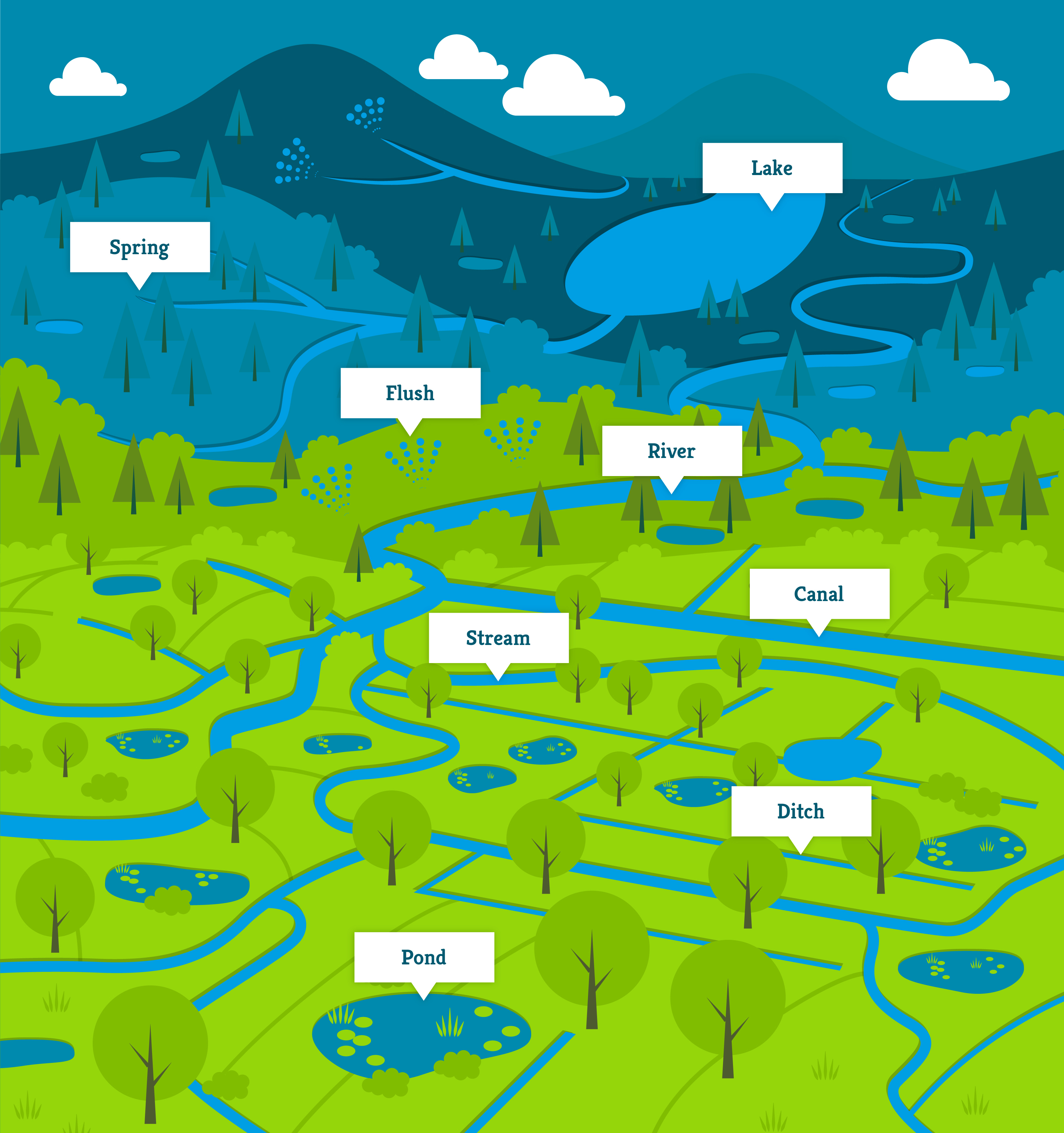
Small water-bodies are now recognized as a vital habitat for freshwater plants and animals and recent evidence shows that they are also critical for successful catchment management.
Small water-bodies include headwater streams, springs, flushes, ditches, small lakes and ponds (see Biggs et al. for definitions). These can be found in all landscapes, often in abundance, and tend to be very varied in their characteristics and the species they support. For small waters, it really is the landscape scale that matters. Take ponds, for example: at the catchment scale they collectively support more plant and invertebrate species than other, larger types of water bodies like rivers. This pattern holds true everywhere that water body types have been compared, including Spain, France, Denmark and various parts of the UK. This is because of the variety of conditions they offer compared to the more homogenous habitats of larger waters, which drain much larger catchment areas.

Image above: Freshwater Habitat Trust Habitat Map
Small ponds provide catchment benefits
A small catchment can be an asset for protecting or creating habitats for freshwater biodiversity. In intensively managed landscapes, it is often the small waters like ponds and wooded headwater streams that remain unpolluted, and clean water ponds can be created relatively cheaply and easily in most landscapes. Of course we know that clean water ponds are good for freshwater wildlife - there’s now plenty of evidence to support that, including soon to be published data from extensive monitoring of ponds created as part of the Million Ponds Project. What’s new are the results from the Water Friendly Farming research project in Leicestershire which has now unequivocally shown that creating new ponds can reverse the decline in freshwater diversity in catchments.
Ponds have regional benefits for rare species
All small waters are widely recognised as important habitats for rare and declining freshwater species – in the UK 10% of all species on the government’s priority list live in ponds (photo examples). At the catchment scale, they also support ‘unique’ species and so they make important contribution to regional diversity. Up to a third of a catchment’s macroinvertebrate biodiversity can be unique to headwaters. Headwaters have also been reported to support about 40% of invertebrate species found downstream, so maintaining the integrity of these small habitats is potentially critical for restoring communities following pollution incidents, to prevent local extinctions. The story is similar for springs and flushes - although the evidence can be harder to find – and is again related to the heterogenous nature of these habitats.
Ponds and ecosystem services
Given their abundance in many landscapes, small waters are likely to play an important role in ecosystem services, including mediating pollution control and carbon cycling, providing small scale water supply, and supporting healthy fisheries. A recent US Environmental Protection Agency review reported that, in river catchments, even physically isolated wetlands, like surface water-fed ponds, influence and benefit downstream waters and provide a range of functions in biological and hydrological processes, as well as the retention and transformation of nutrients, pesticides and metals.
Create more ponds and streams!
Small waters are clearly vital for freshwater biodiversity and healthy catchments, but it is concerning that they remain largely overlooked and widely excluded from government policies and the implementation of legislations like the Water Framework Directive (WFD). To address this, the European Pond Conservation Network was created in 2004 and runs bi-annual conferences which aim to bring researchers and practitioners together to share knowledge of ponds and small wetlands. Other, more recent initiatives have increased the prospect of better protection and management for small waters in Europe. In 2013, the European Environment Bureau, in partnership with Freshwater Habitats Trust and with the backing of the European Commission, ran a workshop bringing together policymakers and nature and water managers to begin the process of discussing how to better protect small waters through existing WFD and Habitats Directive legislation – a first! More recently, in 2015, a UK Expert Group on Small Water Bodies was created which comprised policymakers, academics and practitioners, and the same year the 9th Symposium for European Fresh Water Sciences (SEFS) included a session on ‘Small Water Bodies – knowledge base, importance, threats, and future research priorities’. With Brexit looming in the UK, it’s not really clear how these initiatives will be taken forward and how fast they will progress. Regardless, we need to recognise the value of small standing waters, and that protecting, restoring and creating them is a relatively cheap and easy way, in the short-term, to look after freshwater plants and animal.
References:
SEFS9 special issue of Hydrobiologia
Workshop on the Protection and Management of Small Water Bodies report (2013).
Water Friendly Farming Project reports
US EPA (2015). Connectivity of streams and wetlands to downstream waters: a review and synthesis of the scientific evidence. EPA/600/R-14/475F. Office of Research and Development, U.S.
About the Author:
Dr Pascale Nicolet is the director of policy and implementation for Freshwater Habitats Trust.
For more information sign up for their newsletter at Ripples or for Research and policy news
Follow them on Twitter: @PondsRiverStreams